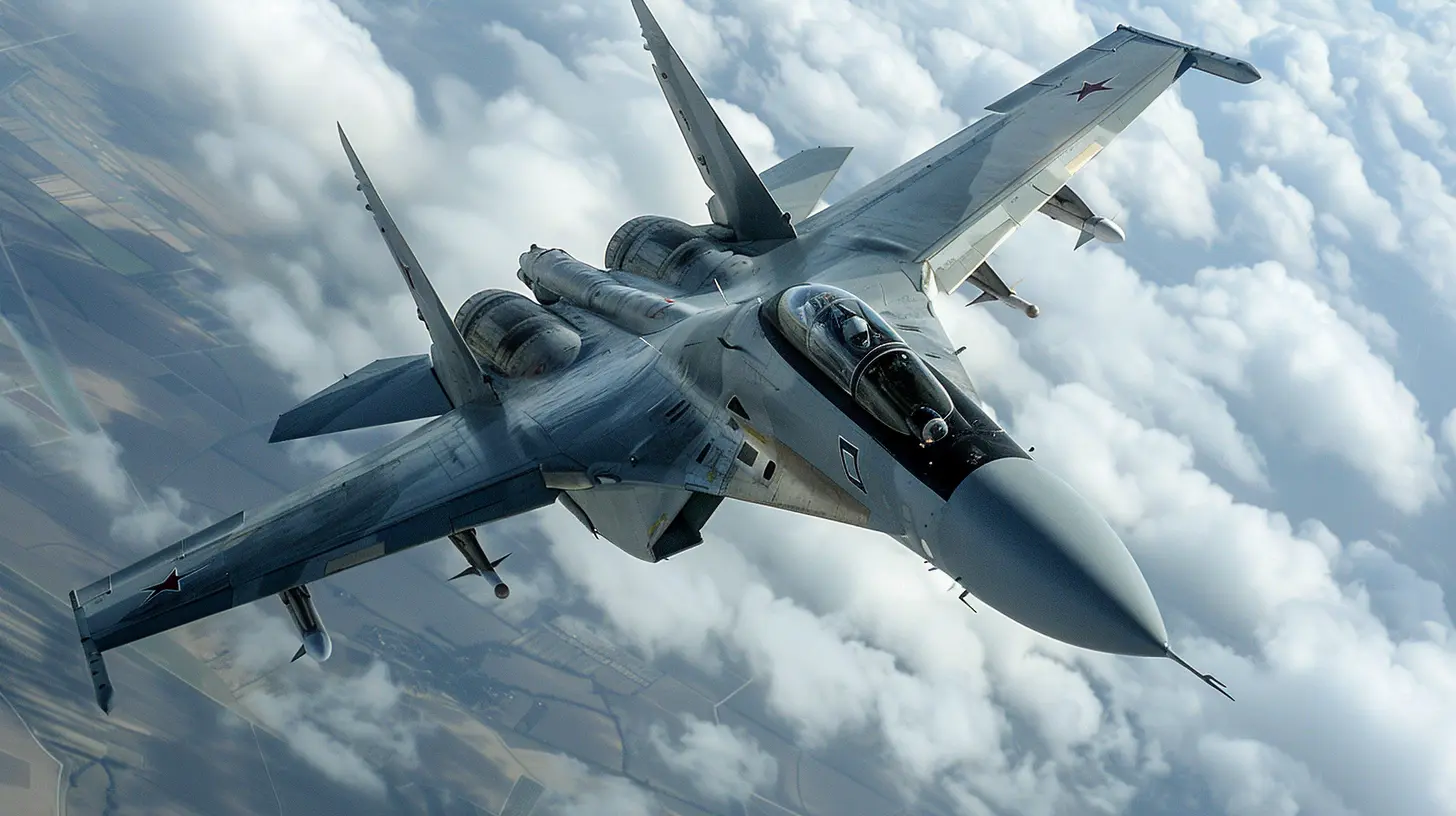Strategies for Mastering Air Combat in Fighting Games
12 June 2025
When you're knee-deep in a high-stakes match and the action starts to lift off the ground—literally—it’s no longer just a regular 1v1. Nope, you’re entering the thrilling, chaotic world of air combat. And let me tell you, mastering the skies isn't just for eagles or jet pilots; it’s where seasoned fighting game players separate themselves from casual button mashers. So, if your idea of fighting games begins and ends with boots on the ground, you're missing out on one of the flashiest, most tactical parts of the genre.
Welcome to your ultimate guide on strategies for mastering air combat in fighting games—a must-read for any player looking to elevate their skills (pun completely intended).
🕹️ Why Air Combat Matters in Fighting Games
Let’s face it: a lot of fighting games are no longer just about footsies and ground spacing. Games like Dragon Ball FighterZ, Marvel vs Capcom, Guilty Gear, and even certain parts of Street Fighter bring aerial movement and combos to the forefront.Air combat opens up an entirely new dimension—literally. While ground game still matters, controlling the air gives you a massive edge. Think about it. You can escape pressure, launch surprise attacks from above, and even extend juggle combos into devastating finishers. Once you get a feel for it, it’s like going from checkers to 3D chess.
👣 Step 1: Understand the Basics of Jumping and Aerial Movement
The Fundamentals aren’t Fancy—But They’re Crucial
Before diving into crazy air combos, you’ve got to master simple jumping mechanics. Every character usually has three jump variations:- Short Jump (or Hop) — Quick and low to the ground
- Full Jump (or Regular Jump) — Takes you higher, slower to land
- Super Jump (in some games) — Covers more screen real estate both vertically and horizontally
Get a feel for each. Knowing how to move in the air lets you bait attacks, dodge projectiles, and transition into offense smoothly.
Pro-Tip: Don’t Just Jump Mindlessly
Bad habits die hard, and one of the most common mistakes? Jumping without a plan. You’re floating like a balloon, just waiting to be popped. Air movement should be deliberate. Watch high-level players—they’re not just jumping because they can. They’re jumping with purpose—whether it’s to bait, approach safely, or punish.
🧠 Step 2: Mastering Anti-Airs and Air-to-Airs
You know what’s better than flying? Swatting someone out of the sky.Anti-Airs: Your Ground Defense Against Flyers
Anti-air moves are literally designed to counter aerial assaults. These moves often have invulnerability on startup or hitboxes that beat out jumping attacks.If you're not punishing jumps, you're giving free reign to your opponent. Learn which of your character’s moves beat out aerial attacks and practice those reactions. Trust me, it’ll dramatically improve your defense.
Air-to-Air Combat: Meet Them in the Middle
Sometimes, you gotta fight fire with fire. Air-to-air combat is all about intercepting your opponent mid-flight. Look for opportunities to jump diagonally and land a quick jab or kick. The goal isn’t always to combo—it can be to reset momentum, knock them down, or just stop their air pressure.Think of it like meeting someone at the top of a staircase. If you get there first, you dictate what happens next.
🎯 Step 3: Learn Cross-Ups and Ambiguous Aerial Offense
Cross-Ups: The Art of Confusing Your Opponent
Ever get hit and go, “Wait, HOW did that land?” Welcome to the lovely world of cross-ups.A cross-up is when you land an attack from the air in such a way that it hits behind your opponent’s blocking direction. It’s nasty, tricky, and absolutely game-changing if used right.
To master it:
- Practice spacing and timing in training mode
- Learn which aerials from your character are best for cross-ups
- Mix it up—don’t make it predictable!
The Mind Games: Frame Traps in the Air?
Yep, aerial offense has its own mind games. Sometimes you throw a light attack in the air, not to hit, but to bait a response. If they press a button, they get clipped. If they block, you land and pressure continues. Knowing when to be aggressive and when to hold back makes your aerial game so much more dangerous.🔄 Step 4: Combo Extensions and Aerial Resets
Juggle ‘Til They Drop
Air combat is where combo creativity thrives. Once you get your opponent in the air, don’t let them go easy. A lot of fighting games allow for juggle mechanics—meaning after launching an opponent, you can follow them with more hits mid-air.Aerial Resets: Reset the Table… mid-Combo?
This is one of those high-level strategies that can tilt even the calmest players. An aerial reset stops your current combo mid-air, forcing your opponent into a quick recovery—which you then immediately punish. It resets the combo counter but not their confusion.Resets require practice and timing. But once you master them, you’ll seem like a mind-reader.
🕵️♀️ Step 5: Read Your Opponent’s Aerial Habits
Knowing your options is half the battle. Reading the opponent’s habits finishes it.Do They Love Jumping?
Punish them with consistent anti-airs and force them to play your game.Are They Passive in the Air?
Take advantage of their hesitation. Apply aerial pressure with layers of mix-ups and cross-ups.It’s not just about execution; it’s about prediction. The more matches you play, the better your intuition will become. Every air dash, jump-in, or dive kick tells a story. Learn to read it like an open book.
🔧 Step 6: Dive Into Advanced Techniques (Optional but Fun!)
Want to flex? Here are some high-level tricks to put you leagues above the rest:Air Dashing
Many anime fighters and tag games include air dashing—quick, horizontal bursts in the air. It's excellent for closing distance, faking out approaches, and extending pressure.Instant Air Actions
These are moves executed as soon as you leave the ground. They often allow you to perform specials or normals faster than usual. The timing is tight, but oh boy, does it look slick.Triangle Jumps
Combine a shallow jump + quick aerial movement = triangle jump. It allows for incredibly fast high-low mix-ups. Great on characters with solid aerial normals.🧱 Step 7: Build Your Muscle Memory with Training Mode
You know how athletes say, “Train hard, play easy”? Same logic applies here.Create muscle memory by grinding against the CPU—or better yet, real opponents—and practicing:
- Jump-ins followed by blockstrings
- Cross-up setups
- Anti-air punishes
- Aerial combos + resets
And yes, it gets boring sometimes. But the dojo is where greatness is forged, friend.
🧑💻 Step 8: Watch Pros, Learn Patterns
Honestly, watching pro gameplay can feel like watching magic happen. But break it down. Why did they jump there? How did they convert that air-to-air into a full combo?Watch top players of your main character, pause the video, and analyze. You’ll start noticing patterns, habits, and techniques to try in your own matches.
Platforms like YouTube and Twitch are goldmines. Use 'em.
🙌 Final Thoughts: Stay Grounded—Even in the Air
Air combat in fighting games is a clutch skill—a dance of decision-making, spacing, and bold creativity. Sure, you can get by grounded. But if you're aiming for that next level, embracing the skies is essential.So step into training mode, queue up some matches, and start experimenting. It’s okay to mess up. We all crashed before we soared. But with time, patience, and these strategies? You’ll be the storm in the sky everyone fears.
Let’s be honest: we all want to be that player who takes flight and never gives the opponent a chance to land.
Now get out there—and take to the skies!
all images in this post were generated using AI tools
Category:
Fighting GamesAuthor:

Jack McKinstry
Discussion
rate this article
2 comments
Kathleen Jenkins
Great tips! Mastering air combat can really elevate gameplay.
June 17, 2025 at 4:05 PM

Jack McKinstry
Thank you! I'm glad you found the tips helpful. Mastering air combat truly enhances the experience!
Blade Lane
Mastering air combat in fighting games requires a blend of timing, positioning, and awareness. Utilize aerial mobility to surprise opponents while maintaining a strong defense. Experiment with aerial combos and counters to adapt to your adversary's tactics. Ultimately, practice is key to mastering the skies and dominating the battlefield.
June 13, 2025 at 4:37 AM

Jack McKinstry
Great insights! Timing and positioning are indeed crucial for aerial dominance. I'll emphasize the importance of practice and adaptability in the article. Thanks for your input!


